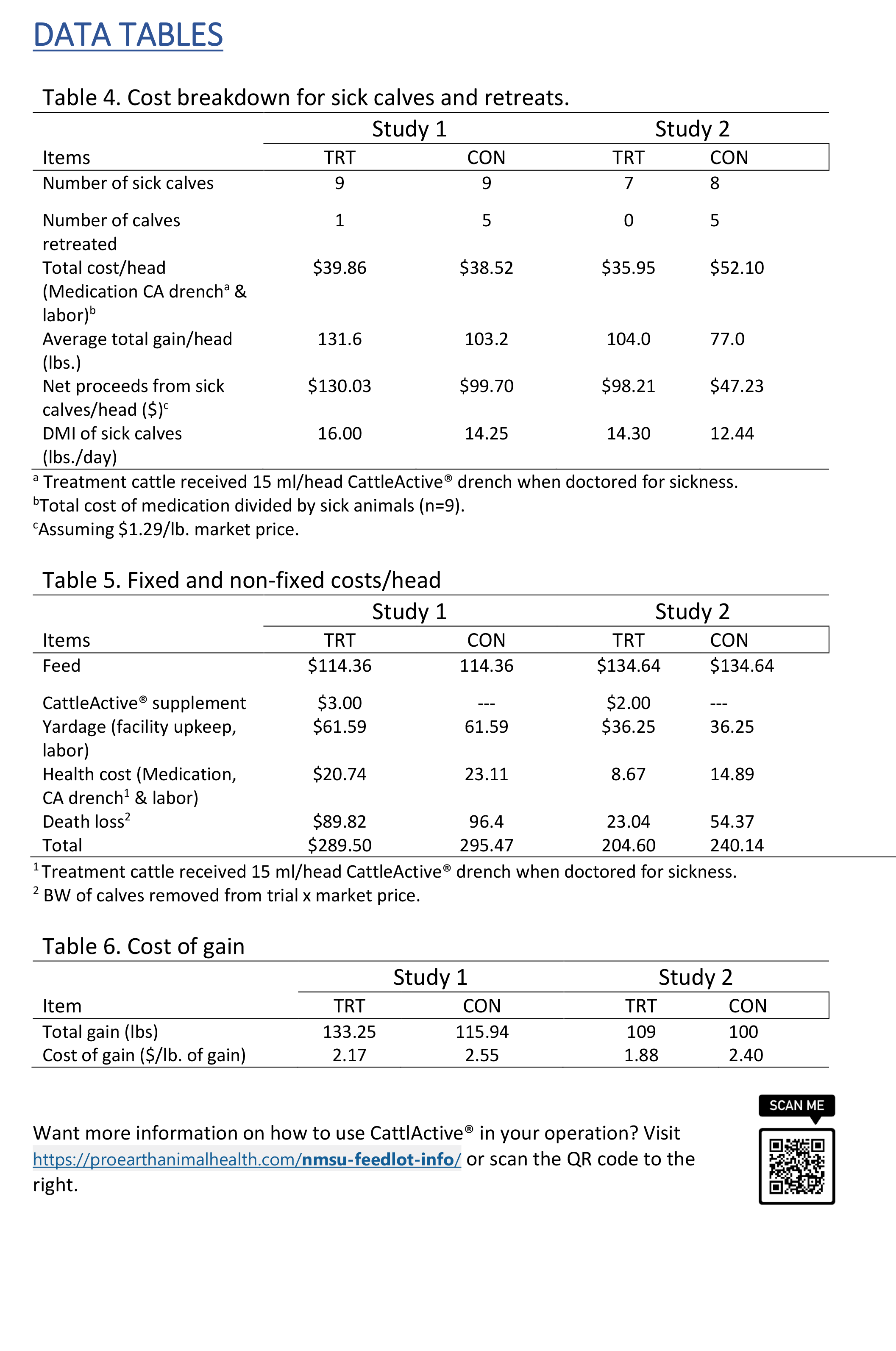Featured
NMSU CattlActive® Study Data
TEST 1 (60 Days)
Study Group 1 consisted of 32 ranch-raised heifer calves. They were all half-siblings, using an Angus bull and English cross-bred cows.
Prior to pick-up from the ranch, the calves were weaned for four days. At the time of weaning they were processed and received Blackleg and IBR vaccines; in addition, they were also dosed with dewormer. Calves showed signs of morbidity prior to shipping and arrival due to the modified live IBR vaccine and handling stress.
Calves were loaded and hauled approximately 2.5 hours to the NMSU Test Center feedlot. At the feedlot, they were comingled for 3 days prior to being sorted.
A wild disposition made handling of these animals very difficult; on day three they were brought from the holding pen and put through the chute. Once in the chute, the Treat Group was given 15 ml CattlActive® drench orally, while the Control Group was given 15 ml H2O orally. A randomized sorting into two groups was performed using an every-other-animal method. Animals from both groups that were exhibiting signs of illness were temped and treated.
Both groups were returned to separate pens and started feeding on a TMR using the GrowSafe Systems®. The test group was given 7.5 gms/head/day of CattlActive® RA pellets mixed into their feed. In addition, if an animal in the Treat Group was pulled and treated for sickness, they were given 15 ml of CattlActive® drench orally.
The Control Group sick pulls were given 15 ml H2O each time they were treated for sickness. Due to the wild nature of these groups of cattle, it was necessary to pen the entire group in order to treat the sick.
TEST 2 (40 Days)
Study Group 2 consisted of 60 sale barn heifer calves ranging in weight from 420 lbs – 620 lbs. They were all purchased on the same day from the Tulia Livestock Auction located in Tulia, Texas.
Following the sale the calves were transported appromixately 2.5 hours to the NMSU Test Center feedlot, located in Tucumcari, New Mexico. The heifers were comingled for 24 hours on hay only.
All heifer calves were processed and randomized through the chute into two separate groups of 30 in separate pens.
The processing protocol for the Treat Group included administration of the modified live IBR vaccine, Blackleg vaccine, dewormer, 15 ml CattlActive® drench orally and no implant.
The processing protocol for the Control Group included administration of the modified live IBR vaccine, Blackleg vaccine, dewormer, 15 ml H₂O orally and no implant.
As mentioned above for the first test, visual evaluation was used to isolate potential sicks for temping and treatment in both the Treat and Control groups.
Following processing, both groups were returned to separate pens and started feeding on a TMR using the GrowSafe Systems®. The test group was given 7.5 gms/head/day of CattlActive® RA pellets mixed into their feed. In addition, if an animal in the Treat Group was pulled and treated for sickness, they were given 15 ml of CattlActive® drench orally.
The Control Group sick pulls were given 15 ml H2O each time they were treated for sickness.

